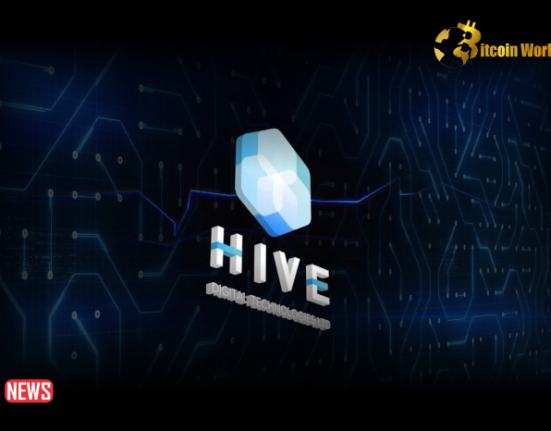Mike McGlone, a Senior Macro Strategist at Bloomberg Intelligence (Bloomberg’s research arm on the Bloomberg Terminal), has presented his views on the implications of layer 2 (L2) scaling solutions on Ethereum.
Polygon is “a decentralized Ethereum scaling platform that enables developers to construct scalable user-friendly dApps with cheap transaction costs while never compromising security.” Polygon is described in the Polygon Lightpaper as “a protocol and a framework for developing and linking Ethereum-compatible blockchain networks.”
On May 18, 2021, Anthony Sassano, an independent Ethereum instructor, investor, and adviser, came on Twitter to clear up some confusion around Polygon (e.g., some people refer to Polygon as a sidechain to Ethereum, while others call it an L2 blockchain). The following are some highlights from that Twitter thread:
- “There is the Matic Plasma Chain and the Polygon PoS chain. The vast majority of the activity is happening on the PoS chain. “
- “The PoS chain is what people refer to as a ‘sidechain’ to Ethereum because it has its own permissionless validator set (100+ who are staking MATIC), which means it doesn’t use Ethereum’s security (aka Ethereum’s PoW). “
- “The PoS chain goes beyond a standard sidechain and relies on and commits itself to Ethereum (what some people may call a ‘commit-chain’). It relies on Ethereum because all of the validator/staking logic for the PoS chain lives as a smart contract on Ethereum. “
- “This means that if the Ethereum network went offline, the Polygon PoS chain would also go offline. Secondly, the PoS chain commits/checkpoints itself to Ethereum every so often. “
- “This has two benefits: it provides Ethereum-based finality to the PoS chain & it can help the chain recover in case of a catastrophic event. This also means that Polygon is paying Ethereum to use its block space (in ETH) & paying for it to secure the contracts & checkpointing. “
Despite a fall in base chain activity, 2022 was a pivotal year for Ethereum, according to the February 2023 issue of Bloomberg Intelligence’s “Crypto Outlook” study. This achievement, according to McGlone, is due to the general use of NFTs and Web3 apps on Layer-2 (L2) chains.
L2 chains, blockchain-scaling solutions aimed at overcoming Ethereum’s restrictions, are said to have stepped in to enhance the user experience and keep users from migrating to other layer-1 chains like Solana and Avalanche. According to McGlone, the number of daily active addresses on rollup or L2 chains climbed by 86% in 2022, while Ethereum decreased by 33%.
According to McGlone, one L2, Polygon, has substantially influenced the Ethereum network. Polygon began as a sidechain and has now moved its attention to zero-knowledge (zk) rollups. McGlone describes zk proofs as a “blockchain game-changer” that enhances privacy while also speeding up transactions.
Despite the possible regulatory concerns established firms issuing their tokens may cause, McGlone feels that the engagement of organizations like Coca-Cola, Starbucks, Reddit, and Meta speaks well for Polygon’s adoption potential. These businesses have either introduced NFTs as an initial Web3 product or have merged with Polygon’s NFT markets.
Mastercard stated at CES 2023 on January 6, 2023, that it is developing a Web3-focused incubator to assist artists in collaboration with blockchain startup Polygon ($MATIC).
According to a report by TechCrunch published earlier today, Raja Rajamannar, chief marketing, and communications officer at Mastercard, told TechCrunch: “The core of this program is providing emerging artists with the web3 tools and skills they need to excel and advance their music careers in this digital economy. By giving the artists access to experts and pioneers in the field, they will be instructed on how to incorporate web3 into their work throughout the program and beyond… We realize that web3 has enormous potential for artists and producers to create, control, and sell their material, but only if they understand how to use it… This past year was tremendous for us, with web3 activations worldwide.”
According to Rajamannar, “after entering the incubator, participating artists should know how to mint NFTs, represent themselves in virtual worlds, and develop a community.”
According to the Polygon team, the Mastercard Artist Accelerator program, which will launch in Spring 2023, will “prepare five emerging artists—such as musicians, DJs, and producers—with the tools, skills, and access to forge their musical paths in the digital economy,” and “the artists will gain exclusive access to special events, music releases, and more.” “A first-of-its-kind curriculum will educate the artists how to construct (and control) their brand through Web3 activities such as minting NFTs, representing themselves in virtual environments, and building an engaged community,” according to the press release.
“Web3 has the potential to empower a new sort of artist that can create an audience, make a career, and provide unique channels for self-expression and connection on their terms,” said Ryan Wyatt, CEO of Polygon Studios. In addition, the Mastercard Artist Accelerator demonstrates the value of businesses adopting this new environment and gives tools to educate customers on how to engage. This is crucial in making Web3’s advantages available to more people.”














